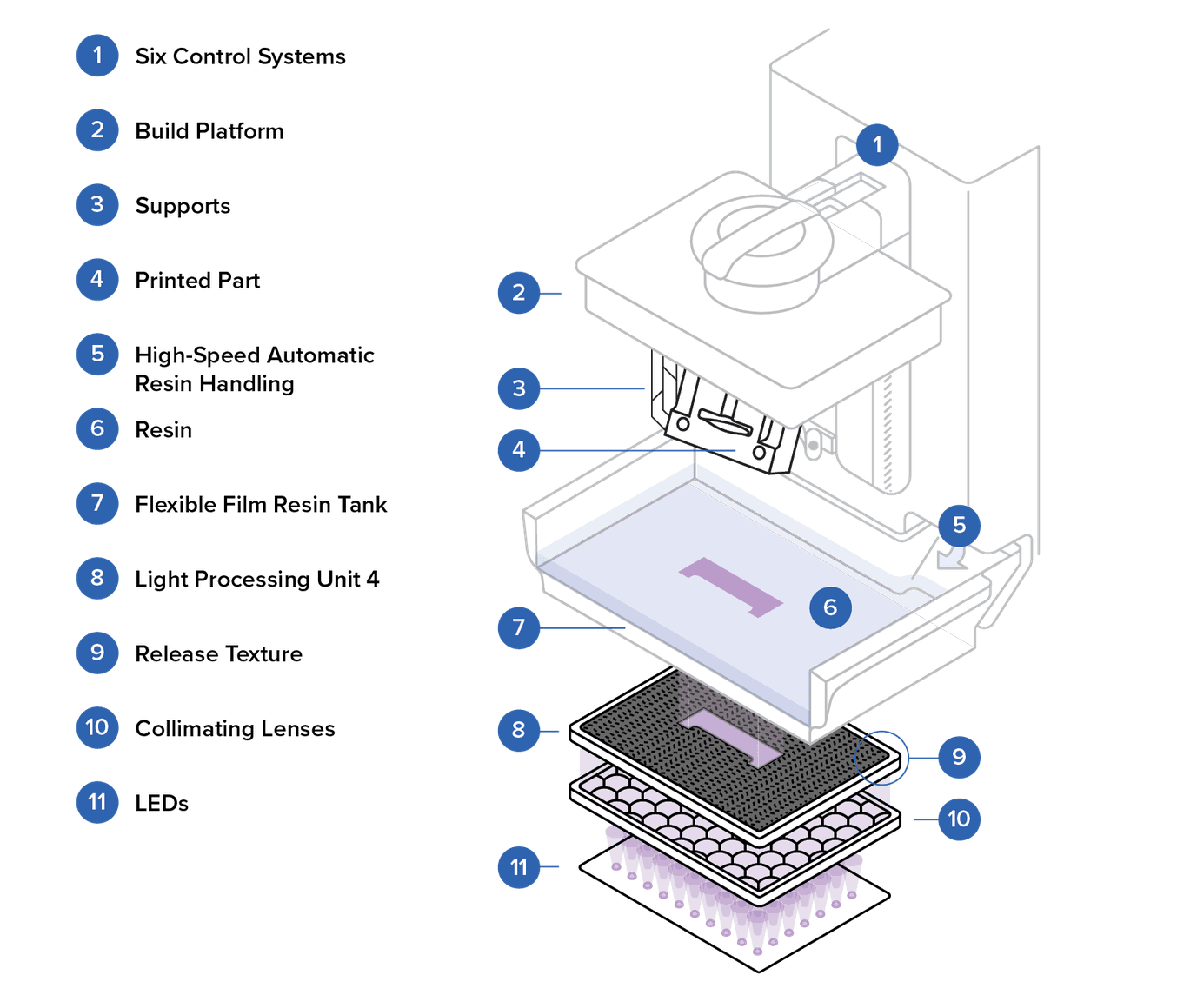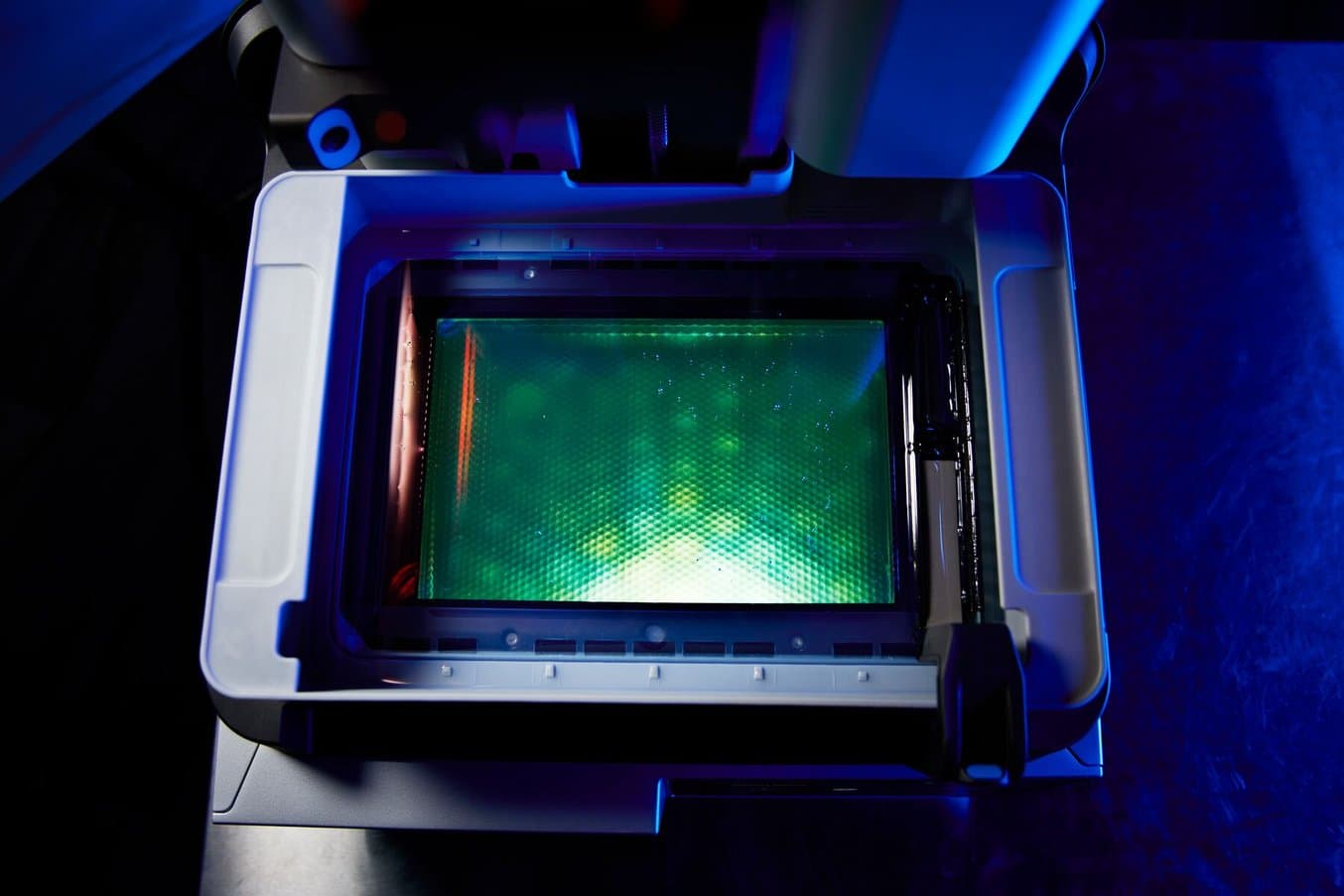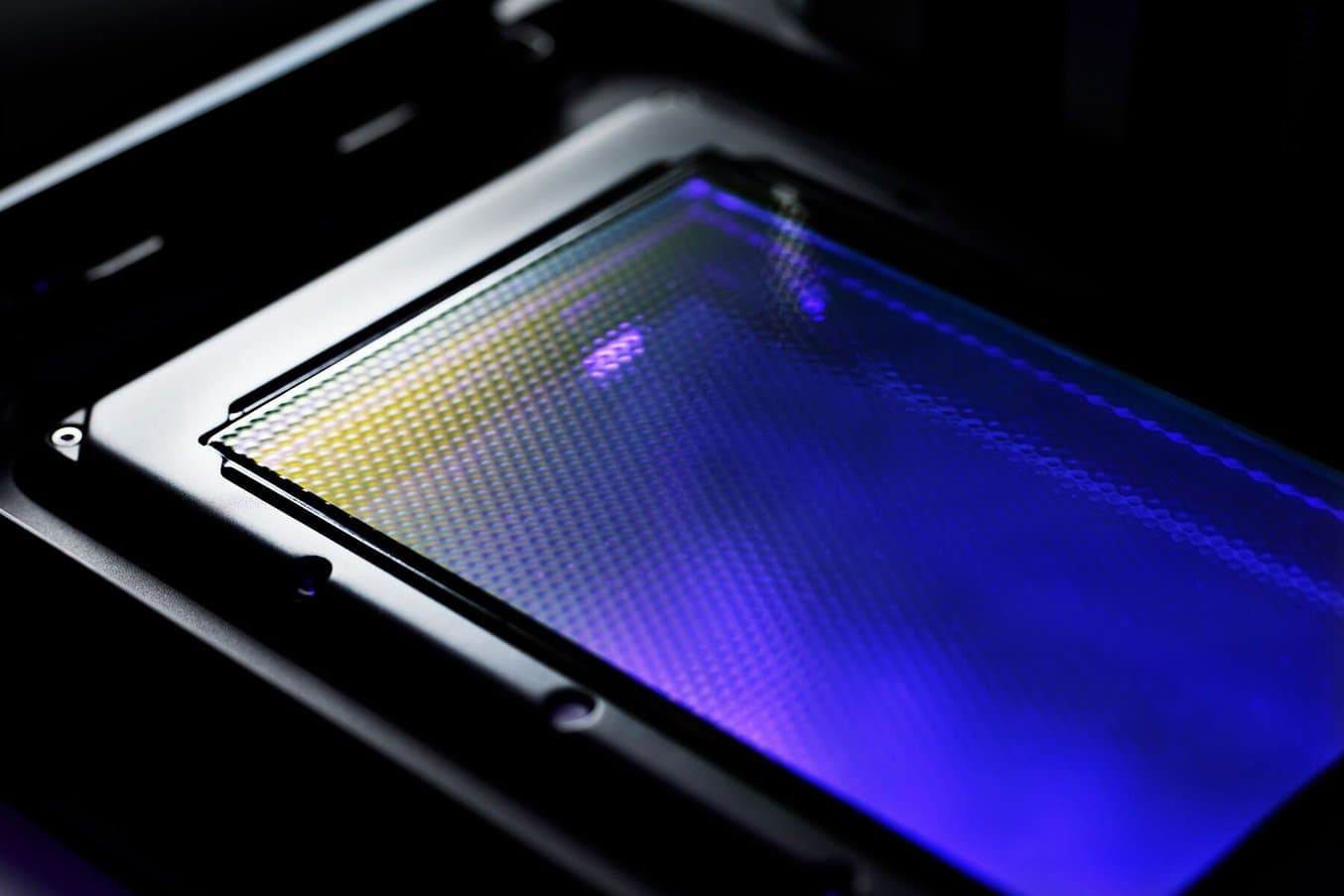Ο Formlabs Form 4 αποτελεί την επόμενη εξέλιξη στο SLA 3D printing μέσω αναβαθμισμένου hardware, λογισμικού και καινοτομία στα υλικά εκτύπωσης που υποστηρίζει. Παρέχει εξαιρετική ποιότητα εκτυπώσεων σε αξεπέραστη ταχύτητα, με τη μέση εκτύπωση να είναι κάτω από 2 ώρες σε όλα τα υλικά, χωρίς υποχωρήσεις σε φινίρισμα ή διαστατική ακρίβεια!
Σχεδιασμένος να ξεπεράσει τις απαιτήσεις των σύγχρονων μηχανολογικών, σχεδιαστικών και κατασκευαστικών αναγκών! Η νέα Form 4 γενιά, παρουσιάζει τη νέα Low Force Display™ τεχνολογία, για επαγγελματικές εκτυπώσεις με κορυφαία ανάλυση, επαναληψιμότητα, ταχύτητα και τεράστια γκάμα υλικών! Φυσικά με την ευκολία χρήσης που μόνο οι Formlabs εκτυπωτές παρέχουν και το κορυφαίο 3DHUB support!
Φυσικά με την ευκολία χρήσης που μόνο οι Formlabs εκτυπωτές παρέχουν και το κορυφαίο 3DHUB Greece support!
Formlabs Form 4 Form 4B 3DHUBgr
What Is Low Force Display™ Technology?
Form 4 is powered by our next-generation Low Force Display™ (LFD) Print Engine. LFD redefines the industry performance standard and delivers unmatched reliability, print speed, print quality, dimensional accuracy, and materials versatility in one printer.

LFD is built on Formlabs’ previous Low Force Stereolithography™ (LFS) Print Engine. Since 2011, over 50,000 companies have relied upon more than 130,000 Formlabs 3D printers to produce over 400 million performance parts.

SLA was patented by scientist Chuck Hull in 1984 as the world’s first commercial 3D printing technology, and opened the door to professional-quality rapid prototyping, revolutionizing the design process for companies like Apple, Boeing, and Ford. However, its reach was limited to the likes of Fortune 500 companies due to printer cost, size, complexity, and material limitations.
Formlabs brought SLA printing to the desktop for the first time in 2011, with the Form 1, empowering a whole new community of engineers and designers with professional tools for in-house prototyping and production.
In 2015, Form 2 introduced new advancements to desktop SLA printing and professionals, including automated resin dispensing, hassle-free materials switching, 40% larger build volume, touch-screen controls, Wi-Fi connectivity, reliability, and a wider range of performance materials.
In 2019, Form 3 and Form 3B (for biocompatible 3D printing) were released, powered by LFS. LFS is a form of stereolithography that leverages a flexible tank and linear illumination to revolutionize print quality and printer reliability, enabling smoother surface finishes and light-touch supports thanks to lower peel forces.
Recently, many manufacturers have switched from laser-based SLA to DLP or LCD as these optical systems have led to substantial improvements in print speed, but often at the cost of surface finish, reliability, resolution, or hardware longevity. Form 4’s LFD Print Engine was developed to address these challenges and deliver the speed, reliability, and part quality that professionals need, all in a single printer. LFD introduces several new advanced subsystems including a backlight unit, light processing unit, release texture, and integrated camera, and significant improvements with updates to the flexible film tank, resin cartridge, automatic resin handling, and intelligent control systems.
| Form 4 | Form 3/B/+ | |
|---|---|---|
| Technology | Masked Stereolithography (MSLA) | Stereolithography |
| Printer engine | Low Force Display™ (LFD) | Low Force Stereolithography™ (LFS) |
| Key components of the print engine | Backlight Unit Light Processing Unit 4 (LPU 4) Release Texture Redesigned Flexible Film Resin Tank Intelligent Control Systems High-Speed Automatic Resin Handling |
Laser Light Processing Unit (LPU) Flexible Film Resin Tank Automatic Resin Handling |
| Light source | Backlight Unit (LEDs) and collimating lenses | Laser |
| Light processing unit | LCD and Release Texture | Galvanometer, mirrors, spatial filter |
| Build volume | 20.0 x 12.5 x 21.0* cm 7.9 x 4.9 x8.3* in 5.25 liters |
14.5 × 14.5 × 19.3* cm 5.7 x 5.7 x 7.6 in 4.05 liters |
How Does LFD Work?
At the core of the LFD print engine is the Backlight Unit. This ultra-high power light source uses 60 LEDs, integrated cooling, and collimating lenses, with industry-leading optical power intensity of 16 mw/cm2, to deliver blazing fast print speeds with excellent print quality and accuracy anywhere on the Build Platform.
The Backlight Unit emits a uniform area projection of light, which passes through the lens array, making the light more collimated, or parallel, and more uniform, eliminating dark or bright spots. The custom lens array is made of plano-convex lenses for highly collimated and uniform light even at high power.
From here, the light passes through the Light Processing Unit (LPU) 4, where it is formed into the shape of the printed layer using a series of polarizers, optical coatings, and a custom liquid crystal display. The 50 μm pixel size of the high-resolution LCD and pre-tuned anti-aliasing delivers sharp details, smooth surface finishes, and accurate tolerances. The custom LCD also features high light transmission, delivering maximum optical power to the resin and achieving blazing fast print speed.
Unlike existing LCD-based printers, the LPU 4 is long-lasting, engineered and manufactured to deliver 600,000 – 1,900,000 layers of consistent print performance before replacement, depending on the material and layer height printed. It is also robust to accidental damage, featuring a strong metal frame, scratch-resistant surface coating, and smart software (debris detection and force limits). When replacement is necessary, anyone can easily and quickly replace the LPU 4 at a low cost.
Once the light reaches the liquid resin inside the resin tank, the full liquid layer immediately cures into a solid layer. The Build Platform then rises out of the resin and a precision Z-axis peels away the layer from the bottom of the resin tank.
In the past, peel forces have been a major hurdle for resin 3D printing, forcing users to sacrifice either part quality, reliability, or printing speed when selecting a printer. With Form 4, peel forces are minimized using a new Release Texture and redesigned Flexible Film Resin Tank.
The Release Texture is a proprietary, microtextured optical film that introduces airflow to prevent the resin tank from suctioning to the LPU.

Form 4’s custom lens array is made of plano-convex lenses for highly collimated and uniform light even at high power.

The proprietary Release Texture prevents the resin tank from suctioning to the LPU by introducing airflow.
The new Flexible Film Resin Tank is a long-lasting consumable that holds resin inside the printer and provides a surface for liquid resin to cure against. It features a dual-layer, flexible film that gently separates from the edges of a cured layer, reducing peel forces exerted on the layer.
Together, the Release Texture and Flexible Film Tank significantly reduce forces exerted on a print. As a result, Form 4 can rapidly and reliably produce smooth, detailed parts with light touch supports that rival injection molding, with extreme print speed and reliability.

Intelligent Control Systems and Integrated Camera
Six onboard control systems precisely measure and maintain the temperature, resin level, print forces, and print status inside Form 4. In addition to the cartridge load cell sensor and conduction heating, Form 4 includes a printer leveling sensor, resin level sensor, integrated Z-axis force sensor, and a camera.
Printer Leveling Sensor: When a Form 4 is plugged in and turned on, the touchscreen will automatically walk you through leveling. Simply follow the screen prompts and adjust the legs of the printer with the provided tool. Leveling the printer ensures the Resin Level Sense system can precisely measure the level of liquid resin throughout a Resin Tank, for consistently accurate prints.
Resin Level Sensor: The resin level sensor measures the exact amount of resin in the Resin Tank and controls the automated resin dispensing system, ensuring consistent resin levels and print performance.
Z-Axis Force Sensor: The Z-axis force sensor measures the forces being exerted on every layer during printing and automatically adjusts Z-axis motion to minimize those forces. This delivers optimal speed, quality, and reliability for any part geometry printed in any material.
Camera: A camera inside the build chamber can take a photo or timelapse video of each completed print and upload it into Dashboard, Formlabs’ printer management software, where print status can be viewed from anywhere. This feature makes remote print monitoring and print history traceability easier than ever. For users wishing to opt out of this feature, the camera can easily be turned off, covered, or removed.


